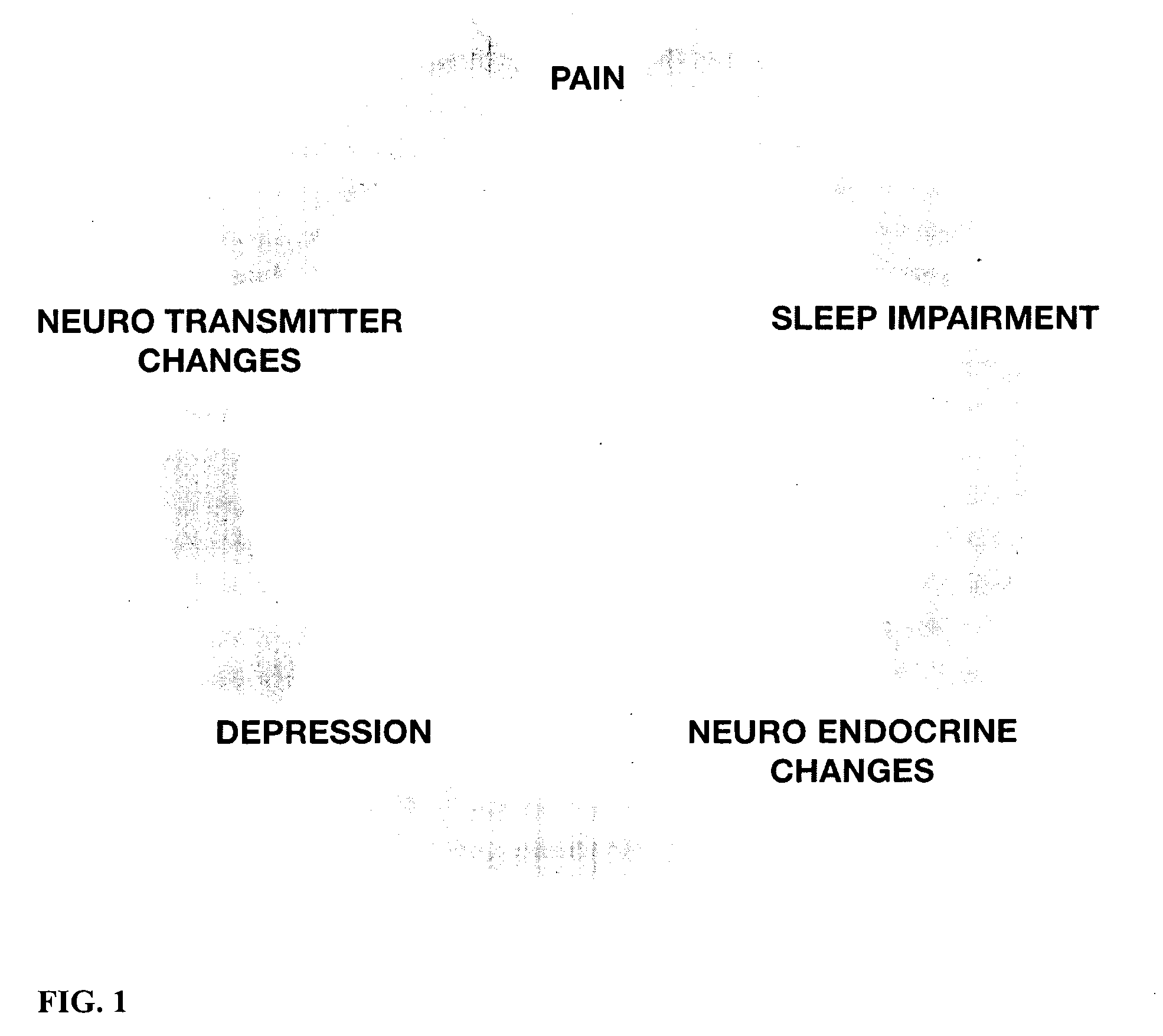Prevention and treatment of functional somatic disorders, including stress-related disorders
a functional somatic disorder and stress-related disorder technology, applied in the field of preventing or treating functional somatic disorders, can solve the problems of chronic activation of stress response, delayed recovery from existing disease, and inability to anticipate a disruption, so as to increase the central concentration and inhibit the effect of serotonin reuptak
- Summary
- Abstract
- Description
- Claims
- Application Information
AI Technical Summary
Benefits of technology
Problems solved by technology
Method used
Image
Examples
Embodiment Construction
Abbreviations
[0021]CFS chronic fatigue syndrome[0022]FMS fibromyalgia syndrome[0023]PTSD post-traumatic stress disorder[0024]SRD stress-related disorder[0025]FSD functional somatic disorder[0026]5-HT serotonin[0027]NE norepinephrine (noradrenaline)[0028]NMDA N-methyl D-aspartate[0029]NSAIDs non-steroidal anti-inflammatory drugs[0030]SSRIs selective serotonin reuptake inhibitors[0031]TCAs tricyclic antidepressants[0032]SNRIs dual serotonin norepinephrine reuptake inhibitors. 5-HT>NE is implied[0033]NSRI an alternative acronym for NE>5-HT SNRI[0034]DA dopamine[0035]TRI a compound that blocks the reuptake of 5-HT, NE, and DA[0036]DRI a class of compounds that blocks the reuptake of 5-HT and NE. This class can be further broken into SNRI and NSRI subclasses.
DEFINITIONS
[0037]The term “dual serotonin norepinephrine reuptake inhibitor compound” (also referred herein as DRI compounds) refers to the well-recognized class of anti-depressant compounds that inhibit reuptake of serotonin and nor...
PUM
| Property | Measurement | Unit |
|---|---|---|
| DA | aaaaa | aaaaa |
| anxiety disorder | aaaaa | aaaaa |
| obsessive-compulsive disorder | aaaaa | aaaaa |
Abstract
Description
Claims
Application Information
 Login to View More
Login to View More - R&D
- Intellectual Property
- Life Sciences
- Materials
- Tech Scout
- Unparalleled Data Quality
- Higher Quality Content
- 60% Fewer Hallucinations
Browse by: Latest US Patents, China's latest patents, Technical Efficacy Thesaurus, Application Domain, Technology Topic, Popular Technical Reports.
© 2025 PatSnap. All rights reserved.Legal|Privacy policy|Modern Slavery Act Transparency Statement|Sitemap|About US| Contact US: help@patsnap.com

